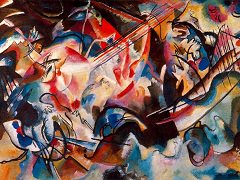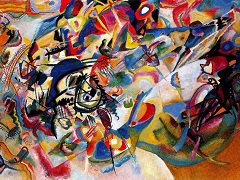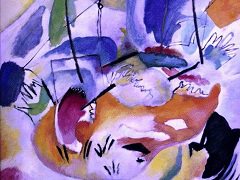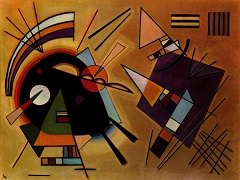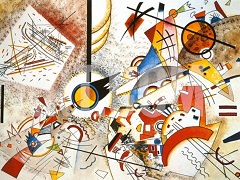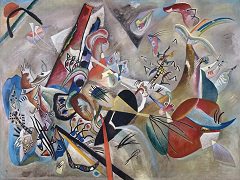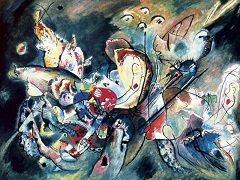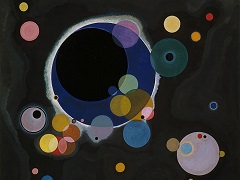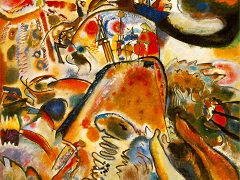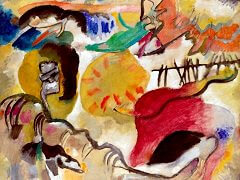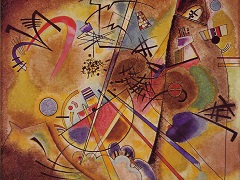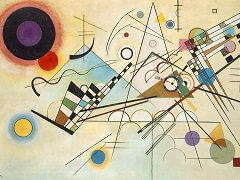Kallmunz Stormy Mood, 1903 by Wassily Kandinsky
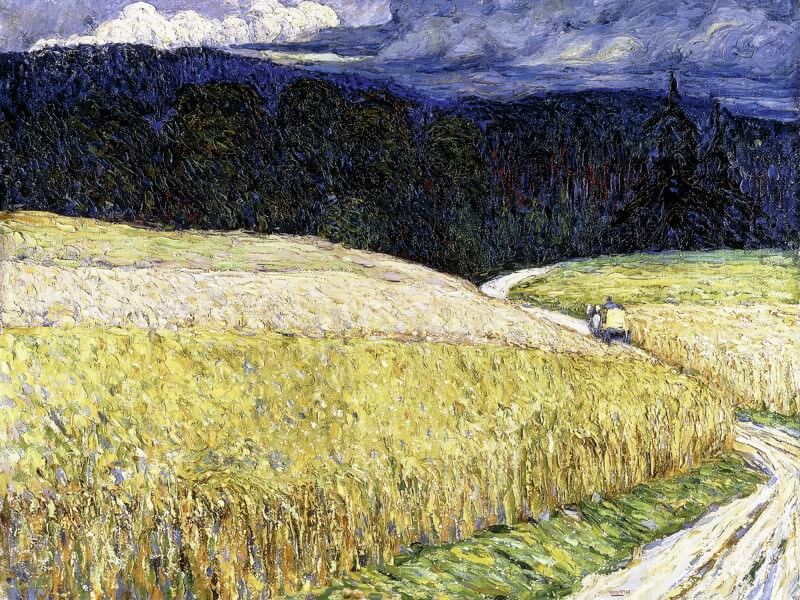
Although Kandinsky was in his late thirties at the time of this painting, it shows the lack of resolution one associates with on artist at the beginning of his career, who is as often as not still absorbing a number of influences. Such a conclusion would, however, be a mistake. The year 1904 marked the end of the 'Phalanx' period in which he had started his own art school less than two years previously. As a tutor he took his students to the more rural parts of Bavaria to paint from nature. At first glance, Kollmunz - Stormy Mood is on Expressionist-style landscape that includes the town's medieval castle. In terms of its painterly qualities and scene it pays due deference to Wheatfield with Crows by Van Gogh, but Kandinsky imbues the work with his own imagination, the sense of 'unworldliness' inspired by the folk-tales and legends of his childhood in Russia. Many of these stories would also have found a resonance with the inhabitants of Bavaria. There is a sense in this painting of a kind of transfiguration by Kandinsky that elevates it from a mimesis of nature to an idealized form, based on an 'inner need'.

